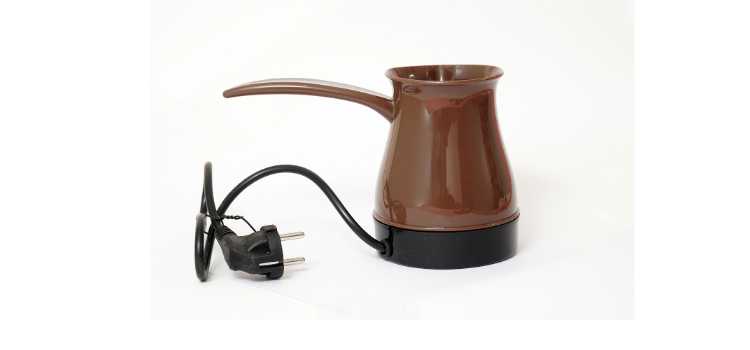As an Amazon Associate, I earn from qualifying purchases

The importance of regular cleaning for an electric percolator cannot be overstated. Much like any kitchen appliance, its performance is directly linked to its maintenance. Over time, the percolator’s components accumulate coffee oils and mineral deposits, particularly if you have hard water.
This buildup can lead to a bitter taste in your coffee and can even clog the internal mechanisms, resulting in inefficient brewing or a complete breakdown. Cleaning your percolator not only preserves the flavor quality of your coffee but also ensures the longevity of the appliance, saving you from frequent replacements.
Gathering Necessary Supplies
Before embarking on the cleaning process, it’s crucial to gather all the necessary supplies. The good news is that most of these items can be found right in your kitchen.
- Essential Cleaning Materials:
- Soft Sponge: Perfect for gentle scrubbing without scratching the surface.
- Dish Soap: Mild detergent works great for removing coffee oils.
- Vinegar: A natural descaler that helps break down mineral deposits.
- Brush: A small brush or an old toothbrush can be invaluable for cleaning hard-to-reach areas.
- Optional Items for Deep Cleaning:
- Baking Soda: Excellent for tackling stubborn stains and odors.
- Descaler: Particularly useful if you have hard water and need to tackle serious mineral accumulation.
Equipped with these tools, you’re ready to proceed with the cleaning.
Step-by-Step: How to Clean an Electric Percolator

Cleaning your electric percolator is a straightforward process. Follow these steps to ensure it remains in pristine condition.
- Unplugging and Disassembling the Percolator: Safety first! Make sure the percolator is unplugged and completely cool before you start. Begin by disassembling the percolator, removing the basket, stem, and lid. This will make it easier to clean each part thoroughly.
- Cleaning the Basket and Stem: These parts come into direct contact with coffee grounds, so they need special attention. Wash them with warm, soapy water using the sponge. For the stem, use a brush to clean the inside where coffee oils tend to accumulate. Rinse thoroughly to ensure no soap residue remains.
- Washing the Pot: Fill the pot with warm water and a few drops of dish soap. Use the sponge to scrub the interior, focusing on any stained areas. Pour out the soapy water and rinse the pot with clean water. To descale, fill the pot with a mixture of one part vinegar to two parts water and let it sit for 15 minutes before rinsing thoroughly.
- Rinsing and Drying Components Thoroughly: Once all parts are cleaned, rinse them under running water to remove any traces of soap or vinegar. Dry each component with a clean cloth or let them air dry before reassembling the percolator.
Tips for Maintaining Cleanliness
To keep your percolator in peak condition, adopt a regular cleaning routine.
- Regular Cleaning Schedule: After each use, wash the basket and stem to prevent immediate buildup. Aim for a monthly deep cleaning session with vinegar to tackle any mineral deposits.
- Avoiding Harsh Chemicals: Stick to mild detergents and natural cleaners like vinegar and baking soda. Harsh chemicals can damage the percolator’s surface and alter the taste of your coffee.
- Proper Storage: Store your percolator in a dry, dust-free area. Ensure it’s completely dry before storage to prevent mold and mildew.
V. Troubleshooting Common Issues
Even with regular cleaning, you might encounter some common issues. Here’s how to tackle them:
- Persistent Stains or Odors: For stubborn stains, create a paste with baking soda and water, apply it to the stain, and let it sit for a few minutes before scrubbing. If odors persist, a vinegar soak can help neutralize them.
- Addressing Mineral Buildup: If vinegar alone doesn’t work, use a commercial descaler following the instructions on the package. This is especially helpful for severe mineral accumulation.
- Ensuring Proper Reassembly: After cleaning, make sure all components are dried thoroughly and reassembled correctly. An improperly assembled percolator can lead to leaks or inefficient brewing.
Conclusion
Cleaning your electric percolator is a small investment of time that yields significant rewards in terms of both flavor and appliance longevity. By following a simple cleaning routine and addressing issues promptly, you can enjoy delicious coffee from your percolator for years to come.
Remember, the key to a great cup of coffee lies not just in the beans or the brew method, but also in the cleanliness of the equipment used. Happy brewing, and may your mornings be filled with the rich aroma of percolated coffee.
FAQ
How do I clean the inside of my electric percolator?
To clean the inside, fill the percolator with warm water and add a few drops of mild dish soap. Use a soft sponge to scrub the interior, focusing on any stained areas. Rinse thoroughly with clean water to ensure all soap residue is removed before drying properly.
How to Clean an Electric Percolator with vinegar?
To clean with vinegar, fill the percolator with a mixture of one part white vinegar to two parts water. Run a brewing cycle, then let the solution sit for 15 minutes. Rinse thoroughly with clean water to remove any vinegar taste, and repeat if necessary for stubborn buildup.
Should you wash your coffee percolator?
Yes, washing your coffee percolator regularly is essential. After each use, clean the basket and stem to prevent coffee oil buildup. A monthly deep clean with vinegar will help remove mineral deposits, ensuring the percolator functions efficiently and your coffee retains its optimal flavor.
How to Clean an Electric Percolator filter?
To clean the filter, remove it and wash it with warm, soapy water. Use a soft brush to gently scrub away any coffee residues. Rinse thoroughly to eliminate soap traces. For stubborn stains, soak the filter in a vinegar-water solution, then rinse and dry before reusing.
As an Amazon Associate, I earn from qualifying purchases